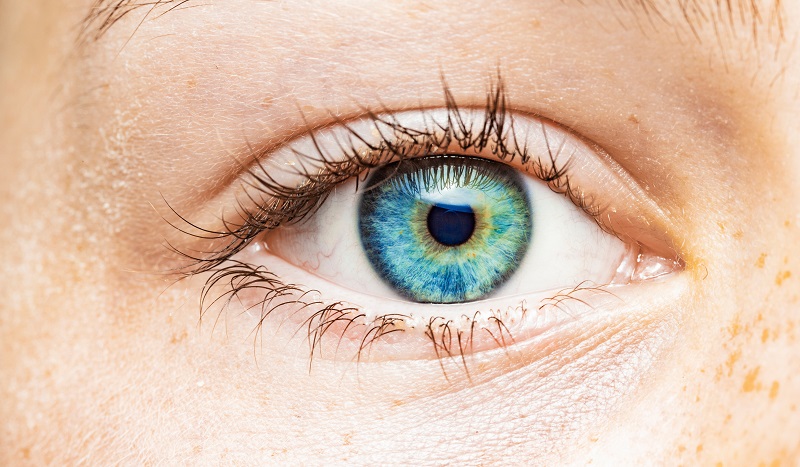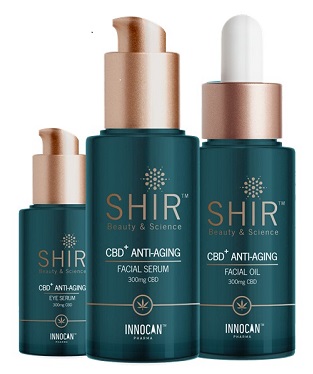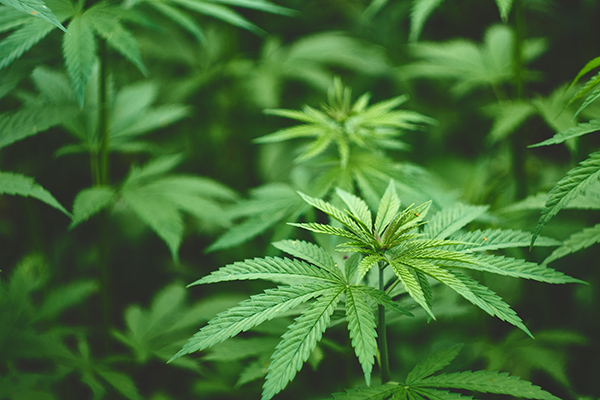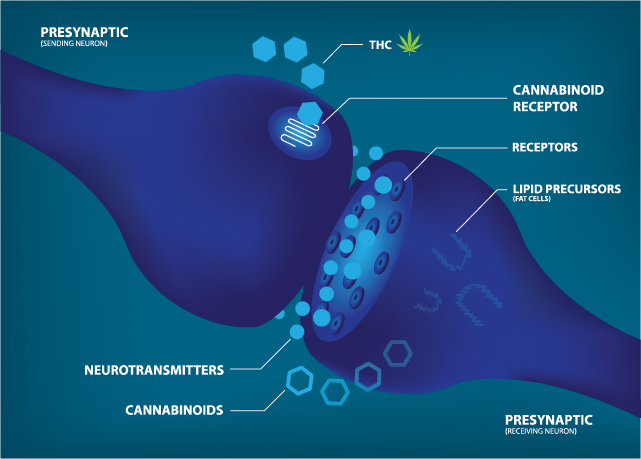Everything You Wanted to Know About CBD Receptors In The Skin & Their Health Benefits
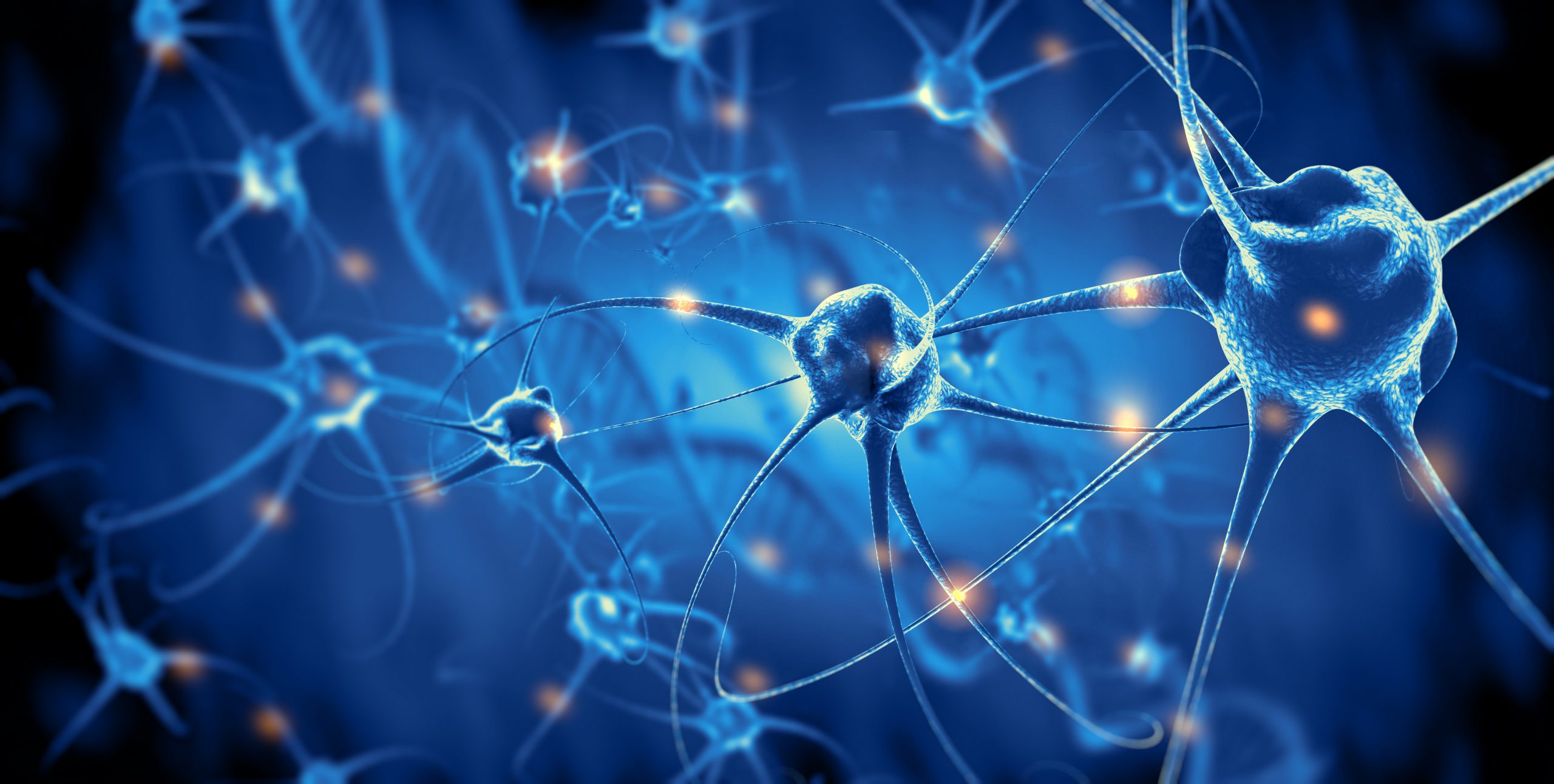
CBD receptors are part of the Endocannabinoid System of the body. The Endocannabinoid system, or the Endogenous Cannabinoid System, is a recent discovery, dating back to only the late 1990s.
In fact, it is the plant Cannabis Sativa that led to the discovery of this intricate body network, which is responsible for several key body functions. The name of this System too is derived from the plant and its compounds.
What the Endocannabinoid System can do and cannot is still under research. Existing research however reveals that endocannabinoids (components of the System) are responsible for a range of body functions, including appetite, mood, sleep, memory and reproduction. The System basically serves as a cell signaling medium.
The Make Up of the Endocannabinoid System (ECS)
The main components of the ECS are endogenous cannabinoids or endocannabinoids, cannabinoid receptors, and enzymes. The function of the enzymes in the ECS is to help synthesize endocannabinoids. They also assist in endocannabinoid degradation, meaning they help break down the endocannabinoids into simpler substances.
The prominent endocannabinoids of the ECS are 2-Arachidonoylglycerol, and Anandamide. These two endocannabinoids are the most researched endocannabinoids as well.
Cannabinoid receptors are believed to play a major role in deciding cellular responses. CB1 and CB2 are the most prominent of cannabinoid receptors. These are also called G protein coupled receptors (GPCRs).
Research shows that these receptors mediate the effects of endocannabinoids and cannabinoids such as THC and CBD. Mediate, in medical terminology, refers to the process of transmission of effects by an intermediate unit. Though other receptors may be involved in the mediation, these receptors are believed to be primary carriers of such effects.
CB1 receptor is available in abundance in the ECS. CB1 is also present in high quantities in the areas of the brain. It is also widespread among other parts of the body in smaller quantities.
CB1 receptors are mostly found in the central nervous system. They are responsible for carrying out functions such as appetite, mood, memory, pain and movement, smoothly.
CB2 is the other prominent receptor of the ECS. This cannabinoid receptor is present in limited quantities in the body. It is mostly found in some nerve cells and in a multitude of immune cells.
CB2 receptors are present in the peripheral nervous system. Pain management is a key function of the CB2 receptor.
Recent studies have shed light on the presence of CB1 and CB2 in the mast cells, keratinocytes and sensory nerve fibers of the skin.
Endocannabinoids and Phytocannabinoids
Endocannabinoids are the part of the body’s internal ECS, meaning these cannabinoids are produced within the body. The most researched endocannabinoids include Anandamide and 2-Arachidonoylglycerol.
Some well-known cannabinoids that are produced outside the body are THC and CBD. These cannabinoids are produced by the plant Cannabis Sativa, and hence they are referred to as phytocannabinoids.
These 2 cannabinoids are one of the several hundreds of cannabinoids found in Cannabis. Though related to THC, CBD is not psychoactive.
These two endocannabinoids mentioned above are often compared to the above phytocannabinoids THC and CBD.
Anandamide is considered to be an analog of THC (tetrahydrocannabinol), which is popular for sending users into a heightened state. The endocannabinoid 2-Arachidonoylglycerol is considered similar to CBD.
Though THC has many known health-related benefits, its tendency to be psychoactive raises concerns among users. CBD, on the other hand, is fast emerging as a promising therapeutic drug for a variety of ailments.
Health Benefits and Safety of CBD
There are numerous research studies that serve as evidence for the health benefits of CBD. There are studies that show that CBD can treat childhood epilepsy symptoms. Two of the most difficult-to-treat epilepsy conditions LGS and Dravet syndromes, also considered the cruelest forms of epilepsy, responded well to CBD treatment.
In some patients, CBD was able to control the frequency of seizures while some patients experienced a stop in their seizures altogether.
Patients with other common yet difficult-to-manage medical conditions such as insomnia, anxiety, and chronic pain, have also responded positively to use of CBD. For example, in insomnia patients, use of CBD was found to make sleep easier, better and uninterrupted.
In patients with chronic pain such as that caused by arthritis, topical application of CBD reduced pain and inflammation. Preliminary research shows CBD to be effective for neuropathic pain – pain resulting from nerve damage. In fact, neuropathic pain is one of the most complex chronic pain conditions to treat.
Another type of chronic pain – pain caused due to inflammation – also responds well CBD use.
Research shows that CBD may have side effects such as irritability, nausea and fatigue, in users. However; it does not pose any serious health risk, according to the World Health Organization (WHO).
A WHO report states that there is no evidence of pure CBD capable inducing side effects such as substance dependence or abuse. There is also no proof to indicate that CBD can induce serious health problems in users.
How do Cannabinoid Receptors Work?
Endocannabinoids receptors are present everywhere in the body. The endocannabinoids of the ECS bind themselves to these receptors. Understanding endocannabinoids and the receptors is key to understanding the effects of CBD on the body.
It is believed that the therapeutic benefits that CBD is capable of, are in fact a result of the compound’s capability to influence the receptors in the ECS. CBD does not bind itself to any of the receptors, but influences them, which is believed trigger the beneficial health results.
Health Benefits of CBD Receptors in the Skin
- Reducing Pain and Inflammation – Pain and inflammation, especially the symptoms resulting from rheumatoid arthritis and osteoarthritis, can be reduced by targeting cannabinoid receptors and cannabinoids.
The structural and biological similarity of the body’s endocannabinoids to the phytocannabinoids THC and CBD makes the latter compounds, especially CBD, a promising treatment for pain and inflammation.
A research showed that application of Sativex®, an oral spray that combined THC and CBD, was able to reduce neuropathic pain in adults. But this administration has considerable side effects, especially given the psychoactive tendency of THC. Research is underway to find a better administration route of cannabinoids for pain relief.
- Dermatitis – Anandamide, which is similar to THC, has been shown to exhibit anti-pruritis effects. Pruritus, or itching, is a common symptom of dermatitis. Anandamide is believed to exhibit such effects through TRPV1 ion channel activation.
These ion channels interact with CB2 receptors present in the keratinocytes of the skin. They then function in the capacity of ionotropic cannabinoid receptors to deliver the intended anti-pruritic effect.
- Pruritus – Pruritus, an itching sensation, can be caused by several other medical conditions apart from dermatitis. Chronic pruritus can be an indication of genetic diseases, infections, and inflammatory diseases.
Studies show CB1 and CB2 receptors on the skin to be capable of reducing sensation of itching. Activation of cannabinoid receptors present in the skin’s keratinocytes, mast cells and sensory nerve fibers, are primarily responsible for treating pruritus.
Anandamide, the THC-analog is also capable of reducing itch. It is able to do so through its interaction with VR/ TRPV-1 receptors found in keratinocytes and mast cells.
- Psoriasis – Cannabinoids have been shown to be potential compounds in the treatment of psoriasis. Some mechanisms through which cannabinoids exhibit their anti-psoriasis effect are anti-proliferative influence on keratinocytes and stimulation of vagal nerve.
The anti-proliferative effect on keratinocytes is believed to be due to the interaction of cannabinoids with PPARγ.
- Skin Cancer – Non-melanoma and melanoma cells possess CB1 and CB2 receptors. Cannabinoids exhibit anti-malignancy property, which enables them to respond to skin cancer in a therapeutic way.
CB2, in particular, is believed to be responsible for mediating the anti-malignancy effects of the cannabinoids. Cannabinoid receptors act by interfering with migration of endothelial cells, and impairment of vascularization (formation of blood vessels in excess).
Cannabinoid receptors exhibit anti-malignancy by also inducing apoptosis in epidermal cells of tumorigenic nature. Activation of the receptors also reduced tumor growth by impeding proliferation of melanoma cells.
- Increased Bio Availability of CBD – CBD is a potential alternative to THC in treating a variety of medical conditions. However; oral form of CBD application makes its availability to the body – bioavailability – very poor.
A major reason for the reduced bioavailability of CBD is the first pass metabolism. First pass metabolism is a process that occurs in the body when a drug is consumed. The drug, which is intended to act on a specific location inside the body, gets metabolized first at a non-target location.
This process of metabolism reduces the concentration of the drug at the targeted site, which reduces the intended drug effect at the targeted spot.
The first pass metabolism usually occurs in the liver. But it can also occur in other areas such as the gastrointestinal tract, lungs and vasculature.
The impact of the first pass effect differs from patient to patient. In patients that undergo severe first pass effect, alternate methods of CBD administration are suggested.
Presence of receptors in the skin, and their similarity to CBD, makes transdermal administration – administration through skin –viable and more effective. This method of CBD administration increases the bioavailability of the compound, and intensifying its effects at the targeted location.
Transdermal CBD administration has been found to be an effective way of treatment for chronic pain.
- Efficient CBD Delivery – By facilitating transdermal CBD delivery, cannabinoid receptors indirectly deliver the following health benefits:
- As First Pass Metabolism is prevented, increased concentration of drug reaches the site of action, which results in focused and prolonged action.
- Need for frequent CBD dosage is reduced. This is a result of the increased concentration of the drug at the intended site of action.
- Risky side effects such as accidental increase in drug dosage is reduced.
- Uniform plasma levels are maintained. This is important to ensure that the drug is effective for the intended action. In oral administration, plasma levels decrease intermittently, increasing the risk of side effects and reduced efficiency.
In transdermal method, plasma levels are maintained at the uniform levels till the completion of the dosing interval.
- Transdermal method offers a less non-invasive method of treatment, which makes it easier, convenient and more comfortable for needle-fearing patients.
CBD Products are Available in Different Forms
Emerging and continuous research into the wide range of health benefits of CBD has spurred the launch of many CBD-based products. There are well-researched and well-tested product lines such as those offered by CBD Plus and CBD Must.
A variety of CBD products customized to specific requirements are now available. For example, consumers looking for CBD to alleviate pain could benefit from pain relief cream, pain relief roll-on, pain relief spray, body oil, and other such pain relief CBD products.
Those looking for well-tested CBD products for cosmetic reasons can consider face cream, facial serum, glow oil, anti aging facial serum, and facial cream.
There are also other specialized products such as eye serum, recovery lotion, and sleeping mask that offer desired benefits for the skin.
Patients interested in the transdermal method can benefit from transdermal CBD patches. These patches are similar patches used for birth control or tobacco substitutes. Patients need to simply peel the adhesive layer and stick the patch on the skin.
As it is transdermal, CBD is directly absorbed into the bloodstream. These patches contain cannabidiol molecules packed in gel or oil. These patches are mostly used on the arms, ankles, wrists, or other such venous parts of the body. This is because such parts male it easier for CBD to be absorbed easily into the bloodstream.
It is believed that the body heat of the user activates the formulation in the patch. This activation releases CBD molecules, which are then absorbed by the body through the skin.
Consulting your Doctor is a Must
Using CBD depends on various factors including body type, weight, existing medications, and medical history. It is crucial to consult with your doctor before embarking on CBD use.
In Conclusion
Existing research shows that interactions between cannabinoid receptors and CBD can yield positive results for some medical conditions. But research is still underway. More clinical trials and research with a larger population are needed to reach conclusive results.
If you intend using CBD products, consult your doctor first. Research the product well. Go for products that publish their lab safety reports and ingredient details. Always check for third party lab testing reports instead of inhouse testing.
More articles:

